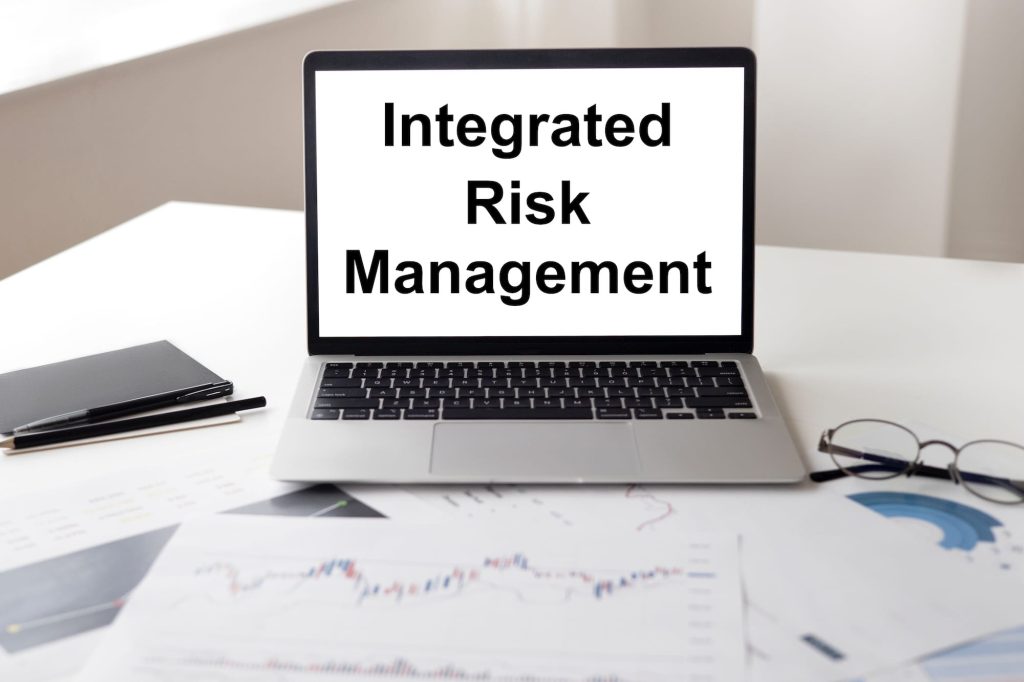Businesses must take risks to survive and grow. Integrated risk management is a proactive approach that includes all risk management procedures and practices that contribute toward better decision-making and a risk-aware workplace. These are aimed at improving the overall performance of the business and detecting current and future risks. Integrated risk management ensures that risks are identified and understood. It also examines the relationship between the most important risks and other threats the business may be facing. It assesses how those risks interact and overlap and what the outcomes could be if risks are connected.
Elements of integrated risk management
Integrated risk management looks at how the business can succeed through effective governance and risk prioritisation. It requires businesses to take steps such as:
- Risk identification
- Risk analysis
- Risk mitigation
- Risk reporting
Risk identification
Before trying to detect risks, a business needs to set objectives. The objectives can help the business understand what type of risks each department may be facing. A risk assessment is performed to detect current and new risks and identify which area they are affecting.
Risk analysis
Risk analysis is performed by looking at the results of the risk assessment. The risks are ranked in order of importance and the most important ones are prioritised. Risk analysis looks at the risk across the whole business as some areas may be facing more threats than others.
To prioritise the risks, the impact and likelihood need to be considered. The measurement for the impact may be based on potential losses or reputational damage. The measurement for likelihood depends on different factors such as the economy, the industry and the company itself.
Risk mitigation
Once risks have been identified and ranked, the business needs to develop mitigation strategies to minimise, accept, eliminate or avoid the risks. Integrated risk management lets managers have a clear picture of the whole organisation when making this decision.
Risk reporting
Once strategies have been implemented, the company needs to monitor them and decide whether they are effective, if they need be slightly changed or new controls need to replace them. The risk management team needs to communicate with the rest of the stakeholders about their plans and future solutions.
Risk assessments should be performed regularly to allow the cycle to continue.

Why is integrated risk management important?
The four steps will improve the risk management of the business as the company will be able to recognise risk and manage it. Integrated risk management aims to achieve that by setting goals that will allow risk activities and operational activities to support one another. The business’s activities are set up so all compliance requirements are met and any abnormalities can be quickly investigated.
Integrated risk management is heavily reliant on good technological systems that encourage better communication and monitoring of the risk management process. It also moves away from traditional risk and data recording such as spreadsheets. This will give organisations better opportunities to grow since the focus is on communicating risks early.
The reason why integrated risk management relies on communication is because it is not based on a traditional approach. Instead of isolating certain areas, it develops a plan on how they can align and work together.
As integrated risk management connects different business operations and risk activities, it assists in the improvement of risk response and of the systems in place. It can be adapted to manage any risk including cyber, market, financial and legal. By viewing every business function, the company can then analyse the risks they are individually and collectively facing.
Businesses that adopt an integrated risk management approach are less likely to have security or data breaches. They are also less likely to be caught off guard and unprepared to deal with threats. Decisions will be timely, organised and more accurate.
How to support integrated risk management
When developing a business plan, a strategy or an objective, employees need to include the possibility of a risk. Fostering a risk-aware environment keeps staff on guard and encourages them to look at different scenarios before making a decision.
Polonious can support integrated risk management by giving businesses a competitive and organisational advantage. It removes the need for keeping piles of documents around by recording all the information online. That way businesses can find any data easier and receive automated updates for cases. Cases can be accessed anywhere, online or offline. Polonious will show employees only relevant information, related to risk management and reduce administrative effort by up to 25%.
Creating a team that will ensure the effectiveness of risk management is one of the best ways to support the overall process. Each employee should be aware of their responsibilities and tasks and receive adequate training regularly to help stay updated with the changing risk environment, laws and regulations and the market.
To develop a better support system businesses have to consider the consequences of their integrated risk management failing. What impact could a bad decision have on their operations or what outcome are they trying to avoid? This may help identify weaknesses that could be turned into opportunities for integrated risk management to improve.
The company might also choose to implement a framework such as ISO or COSO that will provide them with a base and help connect the business operations and risk activities. Frameworks can stress the importance of not only monitoring risk strategies but business processes as well. Every business function needs to be reviewed and assessed for weaknesses. Controls can then be implemented to manage those weaknesses. If business processes change then this does not mean that the controls are not effective. It means that they are redundant and the resources should be allocated towards another activity. Integrated risk management encourages an approach that will require a review of all business operations and risk activities.
Conclusion
Integrated risk management is a well-organised approach that makes a business more secure and leads to better short-term and long-term decision-making. It requires a lot of research and support from management in order to be effective. Constant improvement can give businesses a competitive advantage and reduce vulnerabilities as business processes are not isolated.
Polonious can support an organisation’s integrated risk management by making the whole process easier and providing better workflows. Polonious can identify gaps in policies and streamline the reporting process to increase efficiency. Reach out and learn more!
Let's Get Started
Interested in learning more about how Polonious can help?
Get a free consultation or demo with one of our experts
Eleftheria Papadopoulou
Eleftheria has completed a Bachelor's of Business with a major in Marketing at the University of Technology Sydney. As part of her undergraduate studies she also obtained a Diploma in Languages with a major in Japanese. Following her graduation she has been working as a Marketing Coordinator and Content and Social Media Specialist.
Eleftheria is currently finishing her Master in Digital Marketing.




